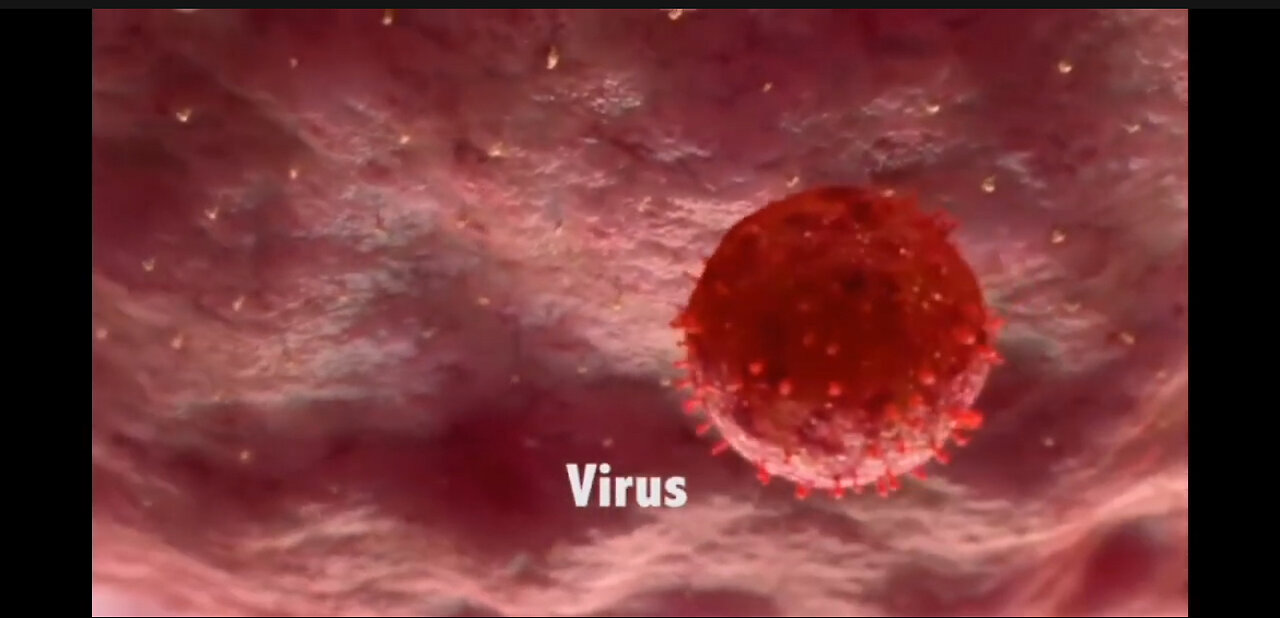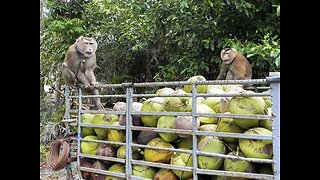Premium Only Content

Exosomes vs. Viruses: A Radical Reconsideration of the Pandemic Paradigm
In times of global uncertainty, one thing becomes increasingly clear: how we understand our reality, especially when it comes to health and medicine, deeply influences our actions, fears, and decisions. We’re asked to trust complex science and life-altering mandates based on established medical theories. But what happens when we question the very foundations of those theories?
Imagine, for a moment, that our current understanding of viruses is not as ironclad as we’ve been led to believe. Picture a world where the virus theory you’ve been taught—those tiny, non-living bits of RNA or DNA that cause illness—isn’t the only explanation for what’s happening in the body. This isn’t science fiction. It’s the rise of a new theory that may completely change how we perceive illness, pandemics, and health: Exosome Theory.
Exosomes: A Cellular Response, Not a Cause
Let’s begin by understanding exosomes—tiny particles that are part of our cells’ internal communication network. When a cell becomes stressed or poisoned, it packages up unwanted materials (like RNA fragments) into exosomes and ejects them from the cell. These exosomes may carry important messages to nearby cells, warning them of danger or providing guidance on how to respond to toxins or stressors.
In exosome theory, these particles do not cause illness—they are the body’s natural defense mechanism, alerting other cells to potential toxins or damage. Exosomes help manage our body’s internal state, ensuring that damaged or toxic materials are expelled.
A World Filled With Toxins
We live in an age of relentless toxicity. Our water is laced with chemicals, the air we breathe is tainted, our food is riddled with synthetic substances, and even our medicines come with dangerous side effects. When our cells are exposed to these toxins—whether from the environment, stress, or other factors—they begin releasing exosomes in large quantities to rid themselves of harmful materials.
In this theory, what we call sickness could, in fact, be our body’s attempt to detoxify itself. The flu-like symptoms we associate with viral infections—fever, congestion, fatigue—could actually be the body’s way of purging poisons and resetting itself to a state of balance. According to exosome theory, what we label as a virus is actually a response to an internal imbalance.
Virus Theory: A Paradigm in Question
In contrast, the widely accepted virus theory posits that non-living viral particles invade our cells, hijack them, and force them to reproduce, spreading infection throughout the body. These particles, primarily composed of genetic material (RNA or DNA), have no cellular machinery of their own and are considered inert until they invade a host cell.
Despite its widespread acceptance, virus theory comes with its own set of questions. For instance:
• How can non-living entities cause such profound biological changes?
• Why do certain “viruses” appear to cause illness in some people but not in others?
• Why are the vast majority of people who test positive for a virus asymptomatic?
Exosome theory provides an alternative explanation: those RNA fragments detected in sick individuals aren’t foreign invaders but self-produced particles created by our own cells in response to toxins or stress.
The Problem with Testing: PCR and False Positives
Now let’s address a critical issue in this debate: testing. The PCR test, commonly used to diagnose viral infections like COVID-19, works by amplifying genetic material found in the body. This test amplifies RNA fragments millions of times, so much so that it can detect even the tiniest amount of material.
But here’s the catch: this RNA material could just as easily be exosomal—produced by your own cells in response to toxins—as it could be viral. And at certain levels of amplification, everyone would eventually test positive for something, simply because our bodies constantly release exosomes.
This could explain why some people test positive one day, negative the next, and positive again. It could also clarify why the test has a high rate of false positives. If what we’re detecting isn’t a virus but an exosome, then all these positive tests don’t necessarily indicate infection.
A Different Perspective on Transmission
Let’s dive deeper into the idea of transmission. In virus theory, illness spreads when infected individuals pass viral particles to others. But exosome theory challenges this assumption.
If exosomes are part of the body’s internal detoxification process, they’re not infectious. Instead, clusters of people becoming ill at the same time could be explained by shared exposure to environmental toxins. For instance, in a densely populated area like New York City, many people may be exposed to the same pollutants, chemicals, or stressors, triggering a simultaneous release of exosomes in many individuals.
The famous Diamond Princess cruise ship incident raises further questions. Despite living in close quarters for days, many passengers tested negative for COVID-19, even though they shared the same environment as those who tested positive. This doesn’t make sense if a highly contagious virus is spreading. But it makes perfect sense in exosome theory, where environmental exposure—not contagion—explains clusters of illness.
The PCR Test Dilemma and the Nobel Controversy
It’s worth noting that the PCR test, developed by Nobel laureate Kary Mullis, was never intended to diagnose infectious diseases. Mullis himself warned against using it for such purposes, as the test is highly sensitive and prone to over-amplifying tiny amounts of genetic material. Could it be that this test is picking up exosomes, leading to widespread false positives?
If exosomes are not the cause of illness, but the response to it, then the foundation of our current testing protocols begins to crumble. How much of what we call a pandemic is based on misidentifying the body’s natural detox mechanisms as evidence of contagion?
A New Understanding of Health and Disease
What if illness is not the result of external viral invaders, but an internal reaction to toxicity? What if exosomes represent the body’s effort to cleanse itself of poisons in the environment? And what if what we call “viral” pandemics are simply the body’s collective response to the overload of toxins in modern society?
This would force a complete reevaluation of our medical system, our environmental policies, and even our understanding of personal health. It suggests that rather than focusing on fighting viruses, we should focus on eliminating toxins, strengthening our immune systems, and supporting our body’s natural detoxification processes.
Conclusion: The Future of Health Lies in Understanding Ourselves
At the core of this debate is a simple truth: our bodies are far more complex and intelligent than we give them credit for. Whether you believe in virus theory or exosome theory, the fact remains that our health is deeply influenced by our environment, our lifestyle choices, and the toxins we’re exposed to.
Maybe the solution to our current health crisis isn’t to fight an invisible enemy, but to cleanse our bodies and the world around us. To pay attention to what we eat, what we breathe, and how we live. It’s time to reconsider the way we think about illness—and ask ourselves: are we really being attacked by invisible invaders, or is our body simply trying to tell us something we haven’t been willing to hear?
-
 1:13
1:13
FragmentsOfTruth
1 day agoMonkey Labor: The Shocking Truth Behind Your Coconut Products
1652 -
 1:01:26
1:01:26
The Dan Bongino Show
4 hours agoTrump Is Cancelling DEI And Cancel Culture (Ep. 2424) - 02/17/2025
485K979 -
 1:06:12
1:06:12
Timcast
3 hours agoDemocrat Swamp IMPLODES, CBS Runs DAMAGE Control For Democrats, Gets ROASTED By Elon | Timcast LIVE
82.9K102 -
 2:00:58
2:00:58
RealAmericasVoice
9 hours agoWAR ROOM WITH STEVE BANNON AM EDITION
60.1K11 -
 2:59:47
2:59:47
Wendy Bell Radio
8 hours agoAmerica Drops The Gloves
66.5K51 -
 1:22:27
1:22:27
Steven Crowder
4 hours agoGeorge Washington, Our First President | 3 in 3 Special
220K141 -
 1:03:57
1:03:57
Kyle Fortch
4 hours ago $1.01 earnedDJ Chill: DJing For Jelly Roll, SOLD OUT Tour, Performing at Hometown Arena | THE ONE SHEET S1E4
23.7K3 -
![The Deep State Spied On Trump & Sabotaged 2020 Operation To Oust Maduro [EP 4440-8AM]](https://1a-1791.com/video/fwe1/94/s8/1/F/5/k/Z/F5kZx.0kob-small-The-Deep-State-Spied-On-Tru.jpg) 4:05:26
4:05:26
The Pete Santilli Show
15 hours agoThe Deep State Spied On Trump & Sabotaged 2020 Operation To Oust Maduro [EP 4440-8AM]
47.4K3 -
 41:53
41:53
Rethinking the Dollar
2 hours agoHype or Hope? Will THE 50-YEAR FORT KNOX GOLD SCANDAL BE EXPOSED?
19.2K7 -
 1:32:36
1:32:36
Game On!
17 hours ago $9.74 earnedPresident Trump TAKES OVER the Daytona 500!
65.5K15